Test/Review: KATA Bumblebee 220-PL Backpack
One of my pet gripes with the way manufacturers design/construct their kit is the way in which they often confuse the concept of ‘adding features’ with ‘over-engineering’ a product.
Let’s face it, the camera bag is a simple affair really. A main compartment, a couple of accessory pockets, secure fastening of some sort and a way to comfortably carry the thing (handles/straps) is basically all you need.
It’s from this stand-point that I have always looked at how I carry my camera gear. Experience has shown that the more features you add, the more complicated a bag will be to access, bringing with it the risk of missing those all-important pictures, at exactly the wrong moment, because you’re fumbling around with clips, straps, zips, buckles and goodness-knows-what.
So with this in mind, how does the Bumblebee 220-PL fair?
—
One of the things I like most about KATA is that they pay great attention to the details, taking onboard real feedback from real photographers in order to better their products.
Using properly decent materials, from the hard-wearing outer right down to the rubberised zip tabs, you immediately get a sense that your valuable kit will be in safe hands. Even the stitching instills faith (how many times have you gone to grab a bag in a hurry, only to have the handle pull away from its mooring?).
The first thing I noticed about this bag was that it’s not exactly what you’d call small. I have used other bags of similar capacity (from other manufacturers) which are nowhere near as bulky. This may or may not be a sticking point, depending on your own particular usage. For example, if you do a lot of travelling and have to store your bag in tight overhead lockers during journeys, it could be a deal-breaker.
Don’t take this as a criticism, though. There is a very good reason why the 220-PL isn’t as flat-looking as other offerings on the market – its Modular Aeriform Dividers are arched so that your lenses etc actually sit below the apex, offering added protection; when you also take into consideration KATA’s flexible Spine Guard integrated into the front exterior zipped area, you can see this makes perfect sense. Personally, I found this latter feature unecessary (it takes up space, for negligable benefit) and I gather that KATA themselves are also having a rethink about how better to work the design.
Looking at the outside… you’ll find two compact front pockets for storage of pen/business cards/phone etc. To the left side are two zipped pockets (one of which is expandable, ideal for flat items) and to the right is an elasticated pocket which can take a small collapsed tripod such as the Manfrotto Compact Photo-Movie Kit. Although this is a nice idea, and I did try it, in reality I’d be worried about ripping its lightweight material, especially if travelling though terrain such as woodland, where it’d be likely to get snagged.*
*I should point out that this is not the intended use for the pocket. The bag actually comes with a dedicated detachable tripod sling, which can be attached to the front or side.
One pocket which I did like was the snug rear padded laptop slot. Designed to fit anything up to 17″, I had no problem fitting my smaller device in; really handy for those occasions where I might need to be shooting tethered on location.
My overall conclusion about these exterior pockets is that, whilst they do serve a purpose, they are not the most practical I have seen. My biggest gripe is that they are too tight, too confining when sliding your hand in. I would rather have one big pocket on the front (which could take a lightweight waterproof coat, for example) and perhaps a second smaller one on the side for those items which need to be accessed quickly, such as keys/money/phone.
—
Let’s take a look inside… Ok, so the first thing you will undoubtedly notice is the colour. It’s bright yellow, make no mistake – but this is very handy when working in low-light conditions as cameras and lenses show up really well against it. In terms of how it shows the dirt? Hmm… I would say that over the long term, a more neutral option such as grey or black would be more suitable for those venturing into the great outdoors regularly.
Aesthetics aside, there is plenty of room inside the 220-PL, and I especially liked the way the zipped lid opens away from the user – quite unusual for a backpack, but somehow more compact than the traditional design. With plenty of adjustable padding throughout, you can comfortably fit 2 pro DSLR bodies, a wide range of lenses, a couple of flash guns and assorted accessories inside.
Now, you might expect me to say this, but flexibility is an important factor to consider with camera bag interiors; personally, I have never left any of my bags or cases in the same permanent configuration from day one. A stand-out feature of tha Bumblebee is the integration of two cocoon pouches, held in place by tough velcro patches.
Each pouch features a double zip, which faces inwards, and tough mesh top panels to stop items moving about. Although I’ve not tried it, KATA do say that this bag can even hold a 500mm lens (with tripod collar removed) – so you can see that, by removing just one pouch, your options increase further.
My biggest criticism of the interior space is to do with the orientation of camera bodies. If you look at KATA’s own illustrations, you’ll notice that a camera is shown, complete with lens attached, at the base of the bag. I would never do this; all it would take is a rough landing on rocky ground and there goes your LCD screen, in spite of the padding. Surely there’s a simple remedy, you might think – just put the camera at the other end.
Um, no. Because of the downward shaping at the top end of the bag (both of the outher shell and interior padding), it was a job to zip the bag up with my D3 in place – because it extended above the line of the padding. Short of taking out one of the cocoons in order to broaden the centre section, which would frankly be a shame, I can see no other option than to place the camera body alone elsewhere in the bag. Not an ideal solution, again risking those all-important ‘in-the-moment’ shots.
—
Of course, the features of any bag are all well and good, but they are pointless if you can’t comfortably carry the thing. And it’s on this final point that I want to round up my Test/Review.
Gecko EVA foam harness straps are what you get with this bag and, to be honest, I couldn’t get on with them.
Even with the bag completely empty, no amount of adjustment and re-adjustment could put a stop to these straps digging into my chest, simply because they refused to lie flat. I’m afraid to say, it was no better around the back, either, with an awkward lump being created at the point where the straps disappear behind the back padding. Why KATA couldn’t have taken the traditional route of anchoring them at the top of the bag, I have no idea – a case of over-engineering, perhaps?
Thinking practically to useage in varying conditions, I can also imagine these EVA straps creating sore points around the chest/shoulder areas on long, hot summer days as a result. Such a shame, because the waist belt (of a considerably more traditional design) was comfy and worked really well at transferring weight to the hips.
But look, I’m of pretty slim design myself, so people of a larger build might not have these same issues. The overall fit might be better.
Other notable features of the Bumblebee 220-PL… There’s a separate double-sided rain cover (why couldn’t an always-ready basic cover have been built in, tucking away into a pocket at the base?) and the function to turn the bag into a roller-case via the addition of KATA’s Insertrolley. There are also a couple of detachable camera straps, too.
And so, here’s my conclusion.
The KATA Bumblebee 220-PL is billed as a multi-featured professional backpack, with PL standing for Pro-Light. Whilst it is pretty light (weighing in at just under 3kg), for my money there are too many frustrations about it when considered with my own requirements in mind. Some are perhaps a little picky, but others I can see would become a problem over the course of prolonged use.
That’s not to say you should write this bag off completely, far from it. Don’t get me wrong, it is solidly built, offers great protection for your kit and would last a lifetime if you looked after it.
But as with all equipment designed to do the best job for its user, you need to find what works best for you.
Category: Test/Review

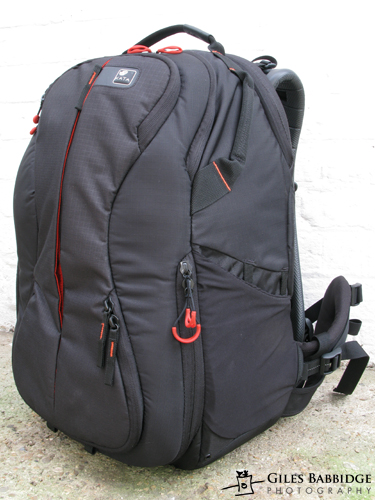
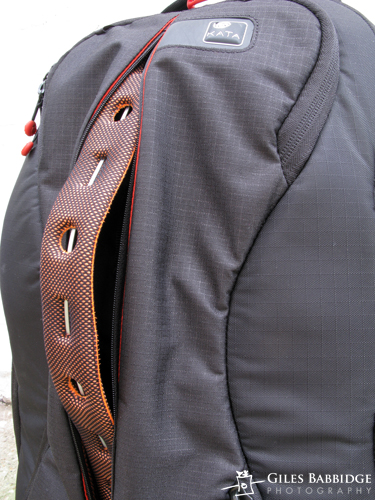
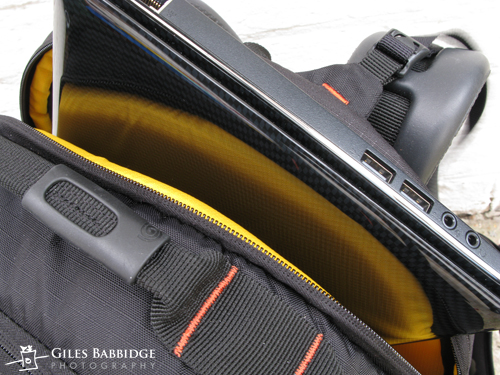
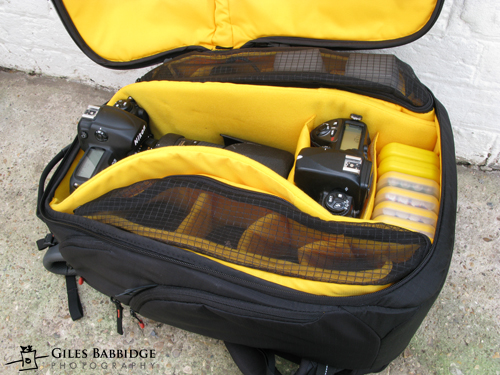
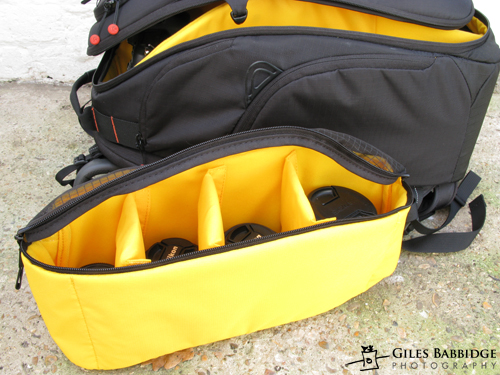
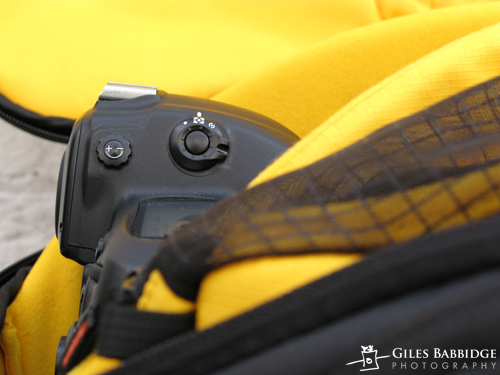
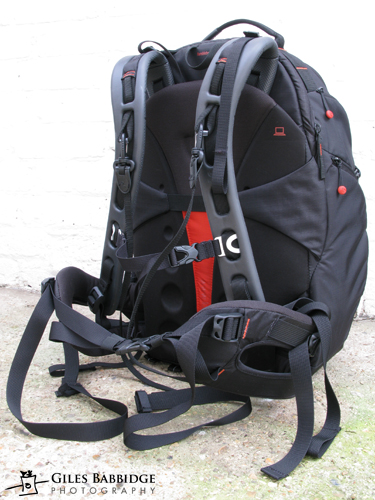
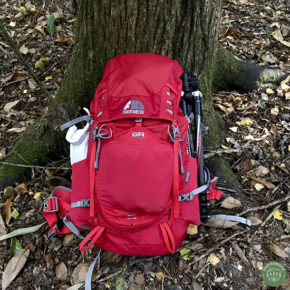
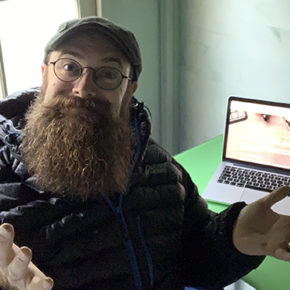
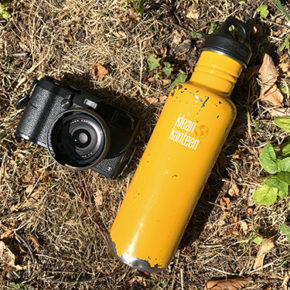
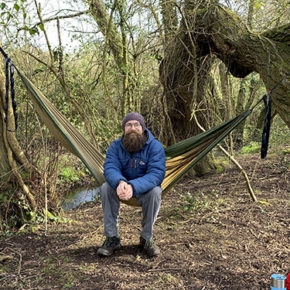
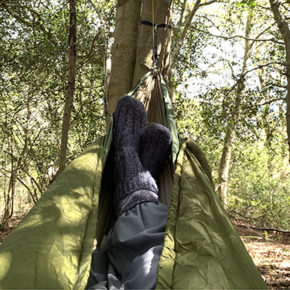
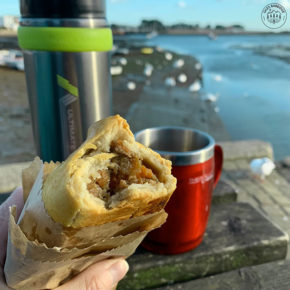




Hi Giles. I’ve actually reviewed this bag myself, quite extensively. I do have to agree with a lot of the points you’ve made. I was using it with a D3s when i tested it, and ended up putting it at the bottom of the bag.
I do have to say though, i have to disagree about the straps. I found them a revelation, and carried this bag with D3s, couple of big lenses, spare DSLR and accessories for an entire day and it felt excellent. Much much more comfortable than my Lowepro, or any other bag i’ve tested for that matter. I’m also a slim frame, so maybe it’s down to personal shape/taste.
Hi Troy,
Thanks for sharing your thoughts…
I have to say, I was really quite disappointed by the straps – such a great design, on paper, I had hoped for a lot from them. Hence why it was such a shame to have to report the way they actually performed for me.
Trying to re-adress the balance, I also spoke to the KATA guys at Focus On Imaging earlier this year, as I always do. I tried on the display model whilst there and that, too, didn’t fit right, even in its empty state.
So I think that you’re quite right – it must be a very individual thing and just goes to show the importance of making one’s selections wisely.
Great review.
I have this bag before reading it. The reason why I googled this bag is because I want to see whether there are others with the same problem that I found with this bag.
And yes, I am not the only one. The bag is great, but I still think it is a bit heavy for its net weight.
When I load all my gears into this bag, I was amazed at how much room was left. My bag with full loading weights about 10Kg, and man those straps craw into my collar bone and shoulders. This bag was so uncomfortable to me that I felt sick from its straps on my 1st day.
This really worries me cos I cannot return the bag from where I purchased it. So I used a bit of DIY, I purchased some soft form and tapped the underneath of the straps where they contact my body. This make things a whole lot better.
I would go on for days with the modified straps. But appearance wise does not impress chicks, especially considering what I have paid for this bag.
Hopefully, I could find a better ligther bag, that is more comfortable. Since the most important part of a backpack are its straps for comfort.
Thanks, Ming.
Interesting to hear more feedback about this particular design…
I think any bag that makes its user feel physically sick on the first (or any) day out has to be viewed with caution. Personally, I could never risk such an issue in the course of my work – long days, often in hostile outdoor environments, require good health and overall good performance from everyone and anything involved.
Well done for finding a way around the problem – we’re a very resourceful bunch, us photographers!
As for impressing people – let your pictures do the talking!
I’ve had this bag for quite a while now and have a few points to add:
1) the yellow interior is great, since you can’t lose small black items buried inside.
2) I find the straps fine for comfort, but very bulky and in the way when just manhandling the bag. The waist strap is removable and it’s probably a good idea to remove it when flying.
3) The bag is very thick, and really a struggle in some aircraft overhead lockers. I’ve found I’ve sometimes had to take out my laptop to make it fit, even on full-size planes.
4) The inner pouches make it very inflexible for fitting gear inside. Basically the layout is pretty much dictated by the items inside.
5) However I’ve always found a layout that works fine, and don’t really see an issue with having a 2nd DLSR at the bottom – I think the padding is sufficient to protect it contrary to Giles’ review. Since I don’t use full-size D4/EOS-1 cameras, or grips, I don’t have a problem for size with having my main camera at the top of the bag for easy access. But I can imagine it won’t fit if you use these cameras or battery grips.
6) Funny how people think differently – it’s much BETTER having a separate rain cover than LowePro’s insistance that it’s attached. Once it’s wet, you can’t put it somewhere separate to dry it if it’s permanently attached!
7) Outside pockets are a bit tight I agree.
8) The metal backbone on the outside probably does a good job of protecting your kit, but it doesn’t work for holding a tripod in place as Kata propose. If you put a tripod on the back it has to be tied to the handle at the top or it will fall off, pulling the backbone with it.
9) The double set of zip pulls for the main compartment is a clever feature, enabling you to lift up the top or bottom of the pack without unzipping the whole thing.
Thanks for your comments, Mike – always nice to hear other people’s views.
I’m very interested in all of this because I’ve been giving serious consideration to a new Kata backpack, though I was initially looking at the similar 282. I have an older Kata R-103 that is comfortable and the right size for carry on but not big enough to take all my gear on normal shoots.
I’m very curious to know how the new Pro Light bags compare for durability and protection against the older bags because the new ones look less solid in pictures. The comments about the new straps are also a matter of concern, so I’m wondering if a Tenba Shootout would be a safer bet.
I’ve actually just sold two shoulder bags that I had for several years. A fantastic Tenba that would swallow everything but had a slightly narrow strap and a CCS that was somewhat smaller but had possibly the most comfortable strap in the world. Both good bags in their own way but as ever no bag is perfect.
Hi Ashley,
Choosing the right bag for you really is very important – not just because you want to make sure your kit is properly protected, but because small niggles can manifest into larger problems over time.
The reason I use roller cases (such as the Peli 1510) on location shoots where I have to walk a fair distance over flat terrain is because I started to get regular back ache many years ago though carrying too much gear over one shoulder.
If you’re in the market for a new bag, why not check out the Bag Buyer’s Guide I recently wrote for the Wex Blog? I’m sure it’ll give you food for thought.
Thanks Giles, I shall definitely have a read of the blog post you wrote, though I’m a pretty old hand at all of this now. I can sympathise with your back problems and can’t help thinking that photography is pretty bad for avoiding backache, since we are either carrying heavy bags or sat for hours in front of a computer monitor.
One of the problems I think photographers face when choosing a bag is that over time our choice of equipment and work requirements often change, so the ideal bag today is frequently redundant five years down the line. This is something I have experienced several times now.
Several years ago I often worked rapidly out of the bag while on location and frankly never even considered a backpack. The CCS was particularly clever with a high Gladstone opening so you could change lenses inside the bag while walking fast and there was no risk of any accidents. Nowadays CCS are no longer in business and I do practically everything with one zoom…
I was just in contact with a photographer working on longterm assignment in Asia who is using a Kata 282 in all manner of weather and he tells me he is extremely happy with the durability, comfort and protection offered by the bag. This uses the same basic materials as the 220 and due to past experience my tendency is to favour bags from Kata or Tenba, however these reports of uncomfortable straps are making me hesitate before placing an order.
The idea is to keep the R-103 for flying and days out when just a few items are needed but then get a big beast for general storage and those times when a full array of equipment has to be taken outdoors.
My prime concern when choosing a bag is that it stands up to heavy use, while protecting the equipment both from the elements and knocks but obviously comfort is an important concern. There are many bags that look good in photos or when you read the sales blurb but only real life experience will tell you if they are up to the challenge.
Just as a quick follow up I eventually decided to get the Tenba shootout medium backpack, mainly due to concerns that I might find the harness straps on the Kata uncomfortable. The Tenba hasn’t arrived yet but it looks like a well made bag. They do a large version but from what I’ve heard most photographers find it too large for practical use.
Thanks for the update, Ashley. I’m glad to hear you found a solution – or so it sounds! Keep me posted on how you get on with it – you know how to get in touch :)